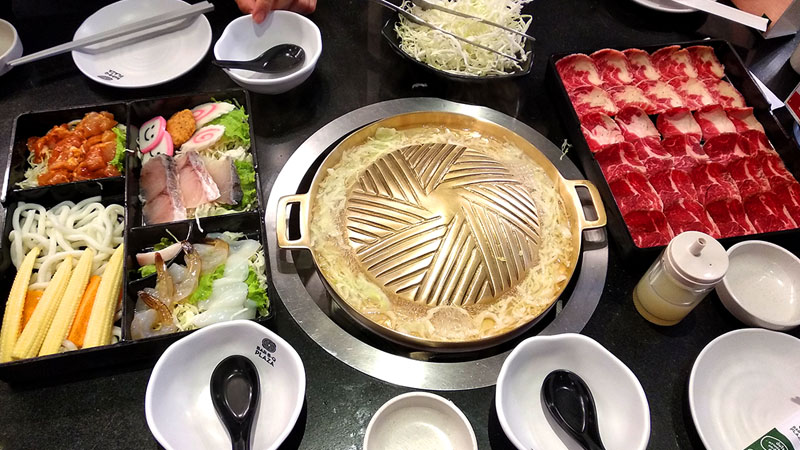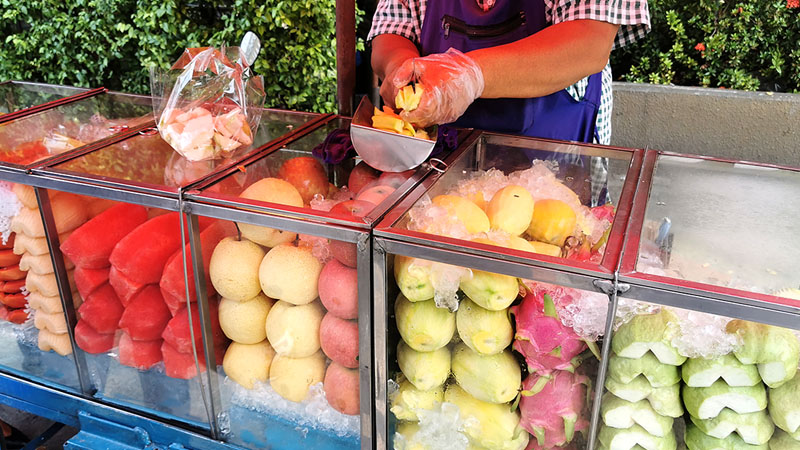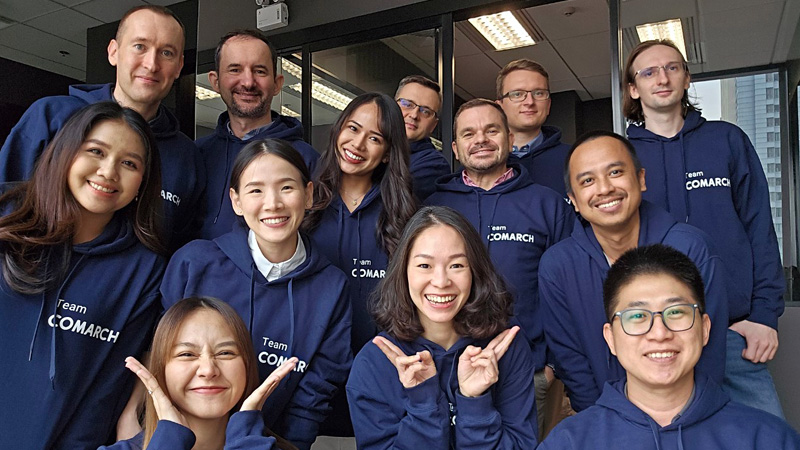Another installment of the article on the differences and challenges lurking in the Asian work environment. In this part we will focus mainly on life outside work and the role of women in Asian society
Free time, but also that at work
Cultural differences also appear on this level. Asian countries are famous for conscientiousness as well as great dedication to work. Is this a correct stereotype? In this case, yes. Working after hours is the norm in Japanese companies, not least because a great many meetings are held after work. We are talking about business meetings (hoesik), which often take the form of a looser dinner, going out for a beer or to a karaoke bar. This is such an integral part of professional life that refusal to do so can be met with much disapproval and even the denial of promotion opportunities. This is also how relationships are built and nurtured in a team, which for the Japanese is one of the most important aspects of working life. After all, there is strength in the group.
The lives of corporate employees in Japan mainly revolve around work. Very often they commute quite a long time to the office on commuter trains, and it happens that after going out with co-workers in the middle of the week, it is no longer worthwhile for them to go home, resulting in a broken night's sleep and often an overnight stay at the office.
We can often see during rush hour that many people sleep on subways and trains on their way home. What's more, sleeping on, under or next to desks while working is also a common phenomenon. Offices provide gymnastics classes in the morning to help employees get into work mode in a healthy way, and to wake up. Japanese people sometimes even work on their days off. Although labor laws introduced in recent years limit the number of overtime hours per month, workers still stay after hours. They often do so of their own free will and do not expect additional compensation.
In Poland, our working hours are clearly defined in advance and we usually stick to them, especially the younger generations, who highly value work-life balance. In Thailand, standard working hours are 9 a.m. to 5 p.m., but it is common to go out after work with the boss and team members. South Korea is very similar to Japan and Thailand in this regard. It is considered the most overworked country in the world, with an average of 1,915 hours worked per year (that's 200 hours more than the average of countries in the Organization for Economic Cooperation for Development, and 33% more than Germany).[1]
Also very common there is the concept of "myeolsabonggong," or sacrificing oneself (especially men) for work, at the expense of one's family and private life. "Gwarosa" is the Korean term for death from overwork. Due to hundreds of such incidents, the work week was reduced from 68 to 52 gods in 2017 the work week was reduced from 68 to 52 hours per week. In 2023, there was an idea to increase it again however, this was met with a lot of opposition from younger generations (Millenials, Gen Z) and it did not ultimately happen.[2]
Japanese people love to dine out. Dining out together enhances the sense of unity and integration, in leisure and working time.Suppose we are already at dinner with our team mates or clients. How should we behave then? When eating, we should hold the chopsticks in our right hand and the bowl of food in our left hand. We are not allowed to point at others with the chopsticks, nor should we serve food with them. When we're done using them, it's best to put them away in a specially prepared place. Slurping in Poland is associated with a lack of culture, very many of us do not like it, it is unappetizing. In Asian countries, however, when eating long noodles (eating ramen or soba, for example) or drinking tea, slurping is very well received. It is a signal that we are enjoying the meal and that we are eating eagerly.

Thai cuisine, author: Marcin Żak
When we finish eating, we should leave leftovers on the plate to give a sign that we are already adequately satiated. The bill is usually paid by the host, but it's worth offering to pay, which will certainly work out in our favor. If we pay, do not study the bill in detail, the restaurant owner may perceive this as a lack of trust. In Japan, it is not customary to leave a tip.
However, the greatest form of respect and friendship is an invitation to your home. When going to visit guests, it is advisable to purchase flowers or sweets. In choosing flowers, the color white should be avoided, as well as lilies, lotus flowers and camellias, as they are associated with death and funerals. Before entering a Japanese house, it is essential to remove your shoes and leave them outside the door. It is worth remembering that traditionally, in homes with tatami mat rooms, one sits at the table kneeling with the buttocks resting on the heels. Most often, the hosts sit together at one end of the table, with the guest of honor facing the veranda.
What about leisure time? Of course it exists, and residents of Asian countries are very eager to take advantage of it. In Thailand, travel is relatively cheap, and there are picturesque islands with beautiful views and nature not far away.
-In Thailand, it is cheaper to eat out (Thai restaurants, night market, street food), and there is easy access to islands with nice beaches and warm water. A weekend trip to an island costs several hundred zloty: hotel night about 100-150zl, food 50-100 zloty per day, motorcycle rental on the island about 35 zloty/day, to this you need to add transport - the nearest most popular island - Koh Samet is about three hours away from Bangkok, the cost of a bus is about 40 zloty round trip comments Marcin Zak of Comarch Thailand.
Interestingly, the Japanese love to barbecue. We only associate this with the Polish May Day tradition, don't we? Due to overcrowding, it happens that when you go to the river, you sit very close to your neighbor, who also decided to go for a barbecue on a given day. Thais, Japanese and Koreans definitely know how to relax. This is evidenced by the huge number of restaurants, bars and clubs for dancing or karaoke. A large number of these are also used for business meetings, but are also used to enhance leisure or nightlife, which is thriving in these countries.

Thai fruits, author: Marcin Żak
The Japanese are able to find their inner child, as evidenced by the sizable number of places with slot machines (you can draw yourself a teddy bear or other toy). Pachinko, as the ball machines are called, were until recently shrouded in disrepute because in the past their owners were yakuza (gangsters). Now, however, they are very popular and loosen up Japanese people after work. Many of them are interested in sports. The first association that comes to mind: sumo! Not at all, as baseball has the most fans in Japan. Japanese are surprised that the U.S. considers baseball its national sport, in view of the activity's such immense popularity in Asia.
Women at work, women in society
The role of women in the business environment and in society is changing gradually, and companies are increasingly noticing inequalities and the need to reduce them. Of course, I mention the European trend here, but what is the situation in Asian countries? In Japan, women are getting more and more attention. The younger generation is already moving away from traditional values and becoming professionally active. Here there is a contrast and a kind of contradiction.
A part of society is still quite conservative, and a woman's role is mainly based on taking care of her husband and family, taking care of the household. However, if one were to take a deeper look at the system that prevails in Japan then, by and large, it suits a sizable portion of women, as not everyone considers business success to be their priority in life. [3]
-Women here have always had an important and valued role in society. It would certainly be unfair to characterize this model as a hardened patriarchy. On the one hand, because being "at home," that is, being a housewife, is socially recognized as a job. On the other, because Japanese women are also in no hurry to join the ranks of corporations and work late like men. Until recently, most unmarried Japanese women did not work professionally. The exceptions were rural areas and family businesses like small restaurants and service outlets. Married stay-at-home mothers, however, have health insurance, and in government offices and official documents, under ‘occupation’ they have the option of choosing ‘professional housewife’. Neither society nor the government, equates the position of women with the unemployed. Such a long tradition of staying at home, along with the love of perfection for which this nation is known, has made the state and society eager to reach out to women. They are engaged stereotypically already in roles caring for children (not enough nurseries and kindergartens), seniors (too expensive institutions like the senior citizens' home), and, above all, in schools and neighborhoods. The number of tasks that await women in unpaid "volunteer work" is extensive. In addition, there are a not inconsiderable number of schools (from middle school upwards) where a child must bring a lunch-box to school, which should consist of a multi-ingredient lunch, elegantly prepared and packaged. Preferably one that the mother prepares in the morning before leaving for work Anna Akutsu tells us.
The most common direction that Japanese women take professionally is administration, mainly due to the strain of domestic duties. However, they do not have opportunities for advancement (ippanshoku) there.The problem also arises with wages. They still earn significantly less than men. Japan is changing, but it is not a country of rapid change.
However, it is worth noting that Japanese women are very entrepreneurial and are becoming active in the wellness and beauty industry (nails, eyelashes, massages), online sales and...investing in the stock market. The same is happening in South Korea and Thailand. Interestingly, once upon a time in Thailand, the birth of a daughter was better received than that of a son. They are largely responsible for finances and supporting the family, and as a result, a good number of them have been economically active since childhood.

Thai #ComarchTeam
However, the Thai government is trying to promote girls' participation in technology, science, engineering and math (STEM) fields. Thais highly value education and send their children to universities if they can afford it. Although in theory women have the same career prospects as men, in practice nepotism and hiring acquaintances are more of a problem than gender discrimination. In Thailand, female representatives are resourceful and often run their own businesses, have ambitions and want to build their careers. They are becoming active in areas such as education, healthcare, hospitality, retail and finance. Government programs and social initiatives that seek to improve the situation of women are gaining momentum.
The Ministry of Social Development and Human Security runs one-OSCC, which provides assistance and support to victims of domestic violence, especially women and children. It provides legal assistance, temporary shelter, medical and psychological support. The same institution runs the Women's Development Fund (WDF), which assists organizations fighting gender inequality and also supports them financially. The main goal of this program, which invests in various projects such as vocational training, community development initiatives and income-generating activities, is to empower women.[4]
South Korea is the world's most aging country. Why? Women take care of the home and children while men work. Unfortunately, these days one salary is definitely not enough, so Korean women are also going to work. Younger generations see an overtired mother who has no time for anything, and the question arises in their minds, "Do I want to live like that too?" Usually the answer is no, and so young girls choose to live alone or set their sights on a career, forgoing having offspring.
The situation of women in these three Asian countries is extremely complex. On the one hand, they have equal constitutional rights, and are gaining success in many areas of life. On the other hand, however, they still experience discrimination and inequality in both professional and private spheres. Of course, the world is rushing forward, awareness is increasing every year, and organizations supporting women's visibility are thriving, so their situation is slowly beginning to improve. Still, many challenges need to be solved to achieve true gender equality, however, not only in Japan, Thailand and South Korea, but around the world.
Education system
But what needs to be done to develop a cadre of dedicated, skilled workers? Start educating them from an early age. The education system in Asian countries puts a lot of emphasis on instilling values in kids that will not only be useful in the future, but will also make it easier for them to work in a professional environment.
Schooling in Japan is one of the most demanding in the world. The education system is 6-3-3: elementary school-gymnasium-high school. Compulsory education continues until the end of junior high school. The school year in Japan begins in April and runs through March. During this time, students have three terms (winter, summer and fall). During the summer vacation, which lasts about six weeks, students often study in special courses and camps. The hours that students spend in school are very similar to our European standards. Japanese school has a specific dress code, with all students expected to have their hair cut short.
Uniforms are strictly prescribed and usually consist of a jacket, skirt for girls or pants for boys, and a tie. They are meant to be both a symbol of unity and students' identification with their school. Japanese children go to school six days a week, but they also study outside school in extra classes such as math. As Anna tells us:
-The more ambitious students attend a paid ‘after school’ juku. They want to raise their level there in order to get into a better middle school/high school/university. In the latter institution, different material is processed, so a child not attending juku will not easily catch up with these students on his own. Therefore, along with the sea of men returning from work around 8 pm, we will also see a crowd of students. Getting into a good school increases the chances of getting into a good university, which in turn increases the chances that a fresh graduate will be picked up by one of the larger corporations, where there are better salaries and stable employment.

The school also supports the development of passions and interests of children. Football clubs, science clubs or a photography club are being formed. Each Japanese school also has its own anthem, symbol and special (different from the daily uniform) outfit exclusively for school events. A healthy lifestyle is an aspect that is very important at these schools. Meals are always balanced, they should provide students with essential nutrients, and physical education classes are mandatory for all. In school in Japan, not only theory is taught, but also discipline, respect for teachers and elders, and the pursuit of perfection.
In Thailand, the school system is slightly different from Japan's. The school year is divided into two semesters. In primary and secondary schools, it usually runs from mid-May to March, while the academic year begins in June and ends in March. Between semesters, students have a two to three week break (in September or October). A longer break of two months falls during the busiest months of the year. The education system is divided into four levels: kindergarten (Anuban), six years of elementary school (Prathom) and secondary school (Matthayom) of lower (equivalent to our middle school) and higher level (equivalent to high school)-youth ages 12-17.
The similarity, however, is the uniforms. In Thailand they are also mandatory. Uniforms are mandatory at every level of education, the only difference being that at the matthayom level the skirt on girls can and usually is shorter. As in Japan, not only general knowledge is instilled, but also appropriate values, such as diligence in acquiring knowledge, through study and other methods, preservation of Thai customs and traditions, morality and goodwill to others, and much, much more. It is interesting to note that shoes must be removed before entering the classroom.
It's safe to say that recruiting is going on from a young age by adapting young Asians to working in an organization, a team and finding themselves in the various situations they will similarly face at work.
What conclusions do we draw?
Asian countries are culturally different from our familiar European patterns. From culture, customs, ways of spending time after work through education and the work environment in which one functions to the role of women in society. We will behave differently at a business meeting with Poles and differently with Japanese or Thais. I think the beautiful thing is the intermingling of our cultures and globalization, which allows us to unite and get the best from others. Japan, Thailand as well as South Korea are multicultural places, extremely interesting, where customs from all over the world intersect. Although cultural differences and challenges exist, the similarities we share make it easier to find our way in these distant places.
Curious about this article and want to try your hand at one of Comarch's branches abroad? We are recruiting for positions in Asian countries all year round. You can count on Comarch's support in obtaining a visa and relocation. Visit our website and learn more: https://career.comarch.com/job-offers/ .
[1] https://www.linkedin.com/pulse/polka-w-azji-czyli-kr%C3%B3tka-%C5%9Bci%C4%85gawka-o-kulturowych-dla-staude-potocka/
[2] https://www.money.pl/gospodarka/praca-od-rana-do-polnocy-rzad-korei-pld-zmuszony-przez-mlodziez-do-kroku-wstecz-6877004074310432a.html
[3] https://gentlewoman.eu/kobieta-w-japonii-byc-kobieta-w-oriencie/
[4] https://www.onet.pl/turystyka/klubpolekpl/sytuacja-kobiet-w-tajlandii-wyzwania-zdrowotne-i-spoleczne/gwc91yf,30bc1058